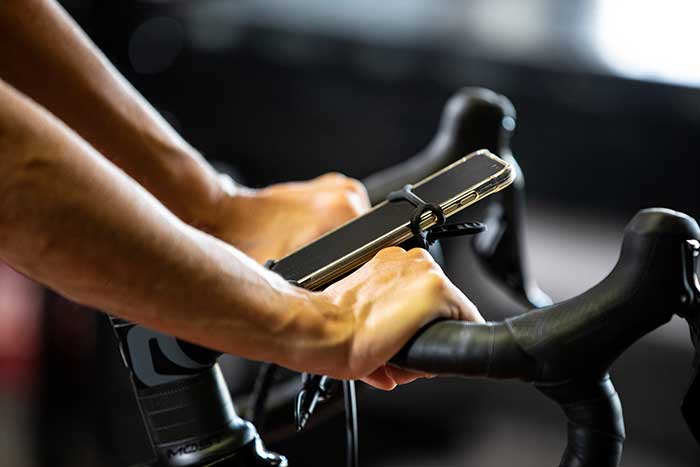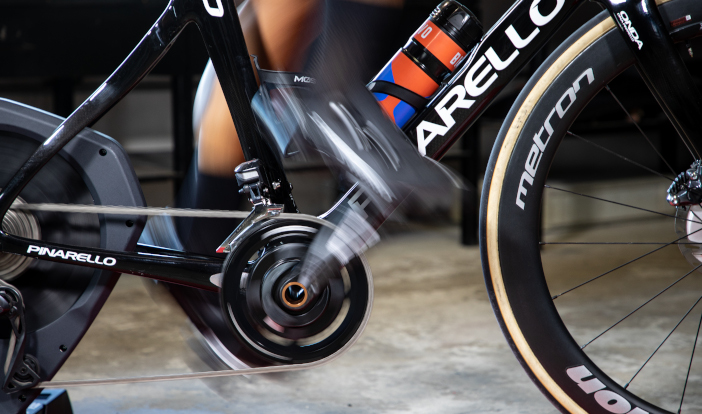The central element is not if indoor training is useful or not; the problem lies in how you do it.
March has just started, there are the first signs of spring but on the bike the cold can still sting. We have gone through winter trying not to lose our motivation even though at five in the afternoon it is already completely dark and the first races are still behind the horizon.
Now the race season is getting closer quickly and our friends photos on social media show off their fitness. We are overtaken by the usual fears that we are not ready and not well prepared enough to be able to sustain the Sunday challenges.
We start to think about a training program to be able to recover our fitness. Then the weekend arrives and we are ready to head out but it is cold, rainy and sometimes also snowy. So we stay at home yet again, sadly look at the indoor trainer and put our bike on it, not fully convinced that the indoor trainer can be a valid substitution for training on the road.
When I talk with the athletes whom I train, in my case for triathlon but it would be the same for cycling, they always express their doubt that indoor training cannot be an effective alternative to training outdoor. Often, they get bored or are not sure how to manage their indoor training sessions. It regularly happens that they cycle for 50’ at a constant rhythm, during which the only vague measurement of effectiveness is the amount of sweat produced.
I am deeply convinced, however, that these doubts are unnecessary, and I will try to explain why.
The usefulness of indoor training in cycling
The central element is not if indoor training is useful or not; the problem lies in how you do it. A training session on the trainer that does not follow a program but is based on the mood of the moment, is just as useless as an outdoor training session done in the same way. Having a method makes the difference, not the place where we do our training.
It is also true that, even when 'improvised', the variability of outdoor training (air resistance, wind, changes in gradient, changes in speed in groups, etc.) makes it, at least in a certain way, more effective than an equally unstructured indoor training session. There are however some elements of indoor training that improve our performance. Let’s take a look
Work on your pedal stroke
With the bike on the indoor trainer, you can carry out a series of exercises to improve your pedal stroke that would not be possible on the road because of all the variables. One exercise I often recommend, is to cycle with only one leg. This helps the fluidity of your cycling and teaches out neuromotor system to reduce as much as possible the so-called “dead spot” in our pedal stroke.
Cancel out weather variabilities
The benefit of indoor training is without doubt the fact that weather is no longer a key factor. Indoor the temperature, air and humidity are more or less constant and allow us to carry out quality training sessions without having to take into account any external elements or variables. The absence of these variables is what allows us to maintain a constant and regular pedal stroke.
Extraordinary mental training
Anyone of you who has already tried the indoor trainer, knows exactly that it is not easy to bear the boredom and keep your motivation to finish the training session high. In fact, because of this, this kind of training is extremely effective and valid. It will help you to “stress” your capacity to sustain fatigue which benefits your resilience as athletes.
Train strength efficiently and more.
The indoor trainer is certainly an extraordinary instrument to work on strength. If you have a good trainer (it is enough to have a trainer that can provide good resistance) it will not be difficult to carry out specific workouts to develop strength. You can carry out specific strength sets or SFR (Slow Frequency Revolutions), variate your cycling cadence and develop agility and fluidity. Indoor you can execute with Swiss precision important workouts for aerobic power and threshold power, key elements of winter training.
This is how you beat boredom, I promise you.
I can promise you that if you follow a precise program, your 80’/90’ training sessions will fly by. The secret lies in having a specific program and knowing its usefulness. Bikevo’s training sessions, under the guidance of world champions such as Alessandro Ballan, are certainly a perfect solution. They combine a training program designed to improve performance with tips and suggestions that Alessandro discusses with you as you cycle together.

Editorial Board
You might also be interested in



